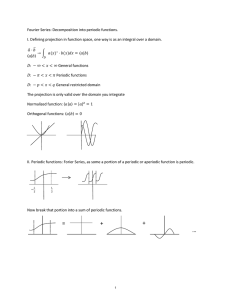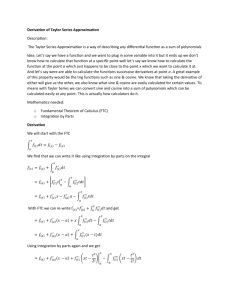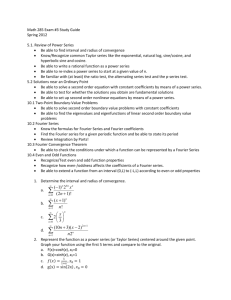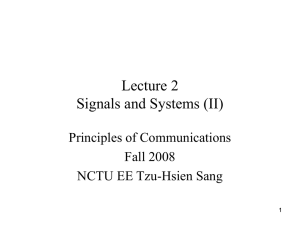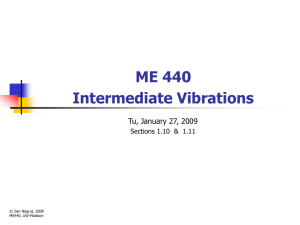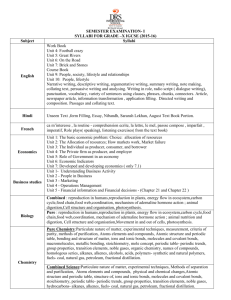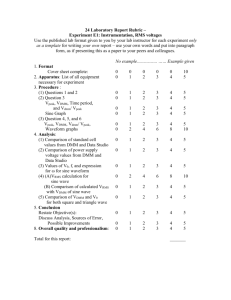c - SNS Courseware
advertisement
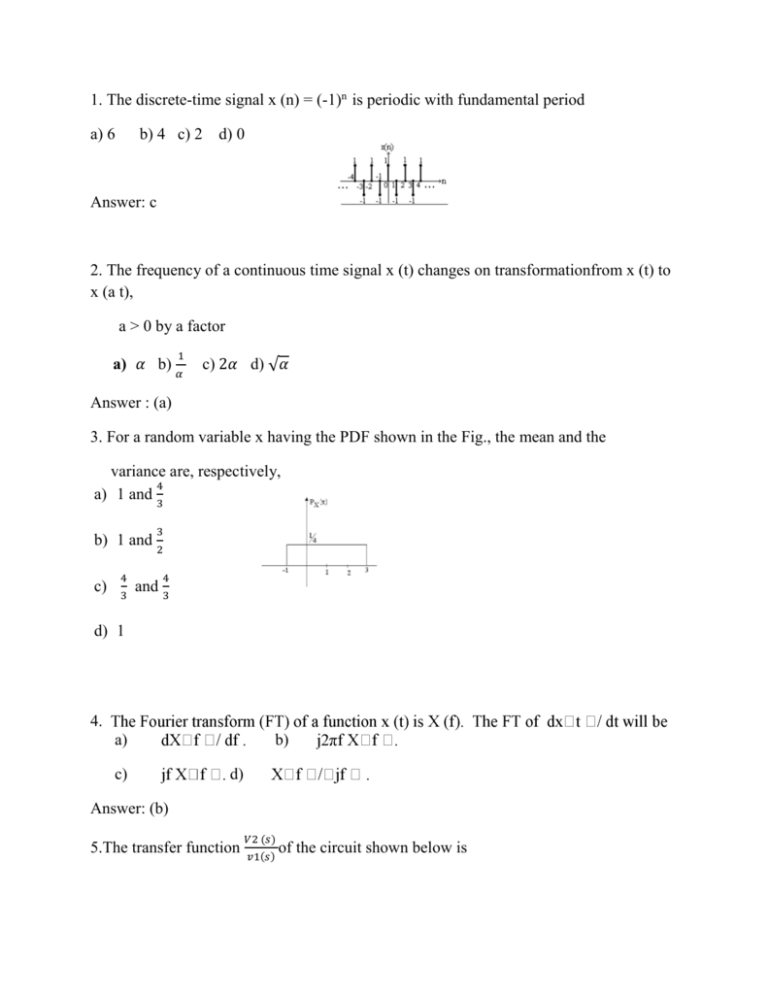
1. The discrete-time signal x (n) = (-1)n is periodic with fundamental period a) 6 b) 4 c) 2 d) 0 Answer: c 2. The frequency of a continuous time signal x (t) changes on transformationfrom x (t) to x (a t), a > 0 by a factor a) 𝛼 b) 1 𝛼 c) 2𝛼 d) √𝛼 Answer : (a) 3. For a random variable x having the PDF shown in the Fig., the mean and the variance are, respectively, 4 a) 1 and 3 b) 1 and c) 4 3 3 2 and 4 3 d) 1 4. a) c) b) d) Answer: (b) 5.The transfer function 𝑉2 (𝑠) 𝑣1(𝑠) of the circuit shown below is 0.5 s 3s 6 (A) (B) s s s 2 s 1 1 2 (C) (D) s s 1 2 5.Classification of signals Answer: Periodic and Aperiodic signal Even and Odd signal Energy and power Signal Deterministic and random signal 6. Sine waves,Cosine waves,rectangular waves and triangular waves are the examples of Answer: Periodic Functions 7. Acr oss 3. x*(t)<-----CTFT----->X*(jw) 6. magnitude of this step signal is unity 8. this system's input can be recovered from output Down 1. x(t)*y(t)<---CTFT--->X(jw)Y(jw) 2. continuous signal converted to discrete samples 3. output response depends on present and past input 4. this signal satisfies x(t)=-x(-t) 5. quantised value creates digital value by this process 7. this signal satisfies x(t)=x(-t) 9. the integral of step function is this function of unit slop 8. Figure given below shows a periodic triangular wave f(t) The trigonometric fourier series of f(t) has only a) cosine terms for all values b)cosine terms for only odd values of k c)sine terms for all values of k d)sine terms for only odd values of k Answer: (b) 9 .The average value of the periodic function v(t) of the given figure a)V/π cos fi b)v/π sin fi c)2v/π cos fi d)v/π Answer: (a) 10) X(k) is shown in the figure below a) b) c) d) 2sin(π/7n)-1 2cos(π/7n)-1 3sin(2π/n)-1 4cos(2π/n)-1 Answer:(b) 11 ) The Amplitude of the first odd harmonic of the square wave shown in the figure is equal to a) b) c) d) 4v/π 2v/3π v/π 0 Answer: (a) 12). Figure given below shows a triangular periodic wave from f (t f 2(t)=f 1(t)-A/2 f 2(t) has 1)Constant term of zero value 2) Only cosine terms in its Fourier series 3)Only sine terms in its fourier series 4)Half wave symmetry Of these statements are true statements are a) b) c) d) (1) and (2) (1) and (3) (1) and (4) (3) and (4) Answer:(b) 13) Which one of the following input-output relationship is that of a linear system output Answer :(d)
